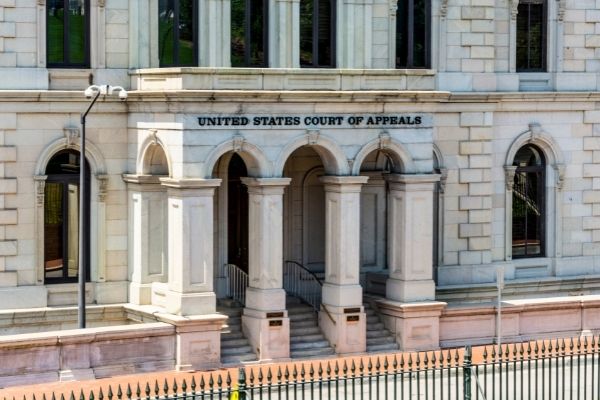Top Federal Appeal Lawyers: Expert Legal Assistance for Your Federal Appeal
Top Federal Appeal Lawyers: Expert Legal Assistance for Your Federal Appeal
Blog Article
Demystifying the Process of Federal Appeals: What You Need to Know
Browsing the elaborate world of government allures can commonly appear like going across uncharted waters for those not familiar with the process. Understanding the subtleties of appellate court jurisdiction, the complexities of submitting a notice of charm, providing a compelling brief, and making a persuasive oral debate are important components that can significantly affect the end result of an instance. By unraveling the layers of complexity surrounding federal charms, individuals can gain a more clear understanding into the devices that govern this critical point of the lawful system.
Understanding Federal Appeals Process
Digging right into the elaborate world of the federal allures procedure unveils a methodical and structured trip via the judicial system. Federal appeals function as a vital system for assessing decisions made by lower courts. Comprehending this process is vital for anybody associated with lawful procedures at the government level.
The procedure commonly begins with an event disappointed with a reduced court's ruling submitting a notice of allure. This triggers a testimonial by a greater court, where a panel of courts analyzes the lawful disagreements offered by both parties. Briefs outlining the legal thinking behind each celebration's position are sent, and dental disagreements may be heard to make clear intricate issues.
The appellate court's decision is based on an extensive examination of the reduced court's proceedings and the debates provided. When the appellate court gets to a decision, it can attest, reverse, remand, or modify the reduced court's judgment, supplying quality and finality to the legal disagreement.
Appellate Court Jurisdiction Described
As we progress from recognizing the federal appeals procedure to dissecting the ins and outs of appellate court jurisdiction, a basic aspect emerges regarding the authority and limits of these greater courts in the lawful landscape. Appellate court jurisdiction describes the range of situations that a certain appellate court has the power to choose and examine upon. Unlike high court that hear cases for the very first time, appellate courts are restricted to assessing decisions made by reduced courts. These choices can consist of judgments from both state and government courts.
Appellate courts have territory over particular kinds of situations, generally those involving legal mistakes, procedural problems, or questions of legislation instead than valid disputes. The territory of appellate courts is typically laid out in statutes and laws that govern the court system. Comprehending appellate court jurisdiction is essential for parties entailed in the allures process as it determines whether a situation is qualified for testimonial and the extent to which the appellate court can interfere in the reduced court's choice.
Filing a Notice of Allure
The initial action in commencing the government appeals process includes submitting a Notice of Charm with the ideal appellate court. This important file formally alerts the court and the various other parties involved in the situation that the appealing party plans to look for a testimonial of the lower court's decision. Submitting a Notice of Appeal is a stringent procedural need that sets the appellate process moving.
When preparing the Notice of Appeal, it is vital to make sure conformity with the specific guidelines and standards of the relevant appellate court. federal crime lawyer. The record has to usually include information such as the case name, the reduced court's name, the day of the judgment being appealed, and a concise declaration indicating the grounds for the allure

Briefing and Oral Disagreement
In the appellate procedure, offering created briefs and taking part in dental disagreements play crucial duties in advocating for the appealing celebration's placement prior to the appellate court. Briefs are comprehensive lawful files that outline the celebrations' debates, lawful authorities, and analysis sustaining their settings. These written entries supply the court with a comprehensive understanding of the realities of the instance, the appropriate legislation, and why the appealing party thinks the reduced court's decision should be rescinded.
Complying with the submission and testimonial of the briefs, oral disagreements offer the events an opportunity to more clarify their settings, resolve any type of inquiries the appellate judges may have, and emphasize bottom lines from their composed briefs. Dental disagreements are a possibility for the attorneys to convince the judges with spoken advocacy and feedbacks to inquiries from the bench.
Both the written briefs and oral disagreements are important elements of the appellate procedure, permitting celebrations to provide their case completely and compellingly prior to the appellate court. - federal appeal lawyers
Getting the Appellate Court Choice
Upon conclusion of dental debates and entry of written briefs, the next pivotal phase in the appellate process involves awaiting the decisive ruling from the appellate court. This period of anticipation can be loaded with a mix of anxiety and hope for events included in the charm. The appellate court's choice is commonly supplied in a created style and lays out the court's final thoughts on the legal issues provided, the thinking behind their decision, and the judgment provided. The moment frame for obtaining the appellate court's choice can vary, but courts strive to offer timely resolutions. When the decision is released, celebrations should thoroughly examine the try this web-site court's ruling to recognize the end result and figure out any more actions that may be essential. Whether the appellate court affirms, reverses, or remands the reduced court's choice, comprehending the effects of the judgment is important for all parties entailed in the appellate process. Promptly evaluating and comprehending the appellate court's decision is vital in browsing the next steps in the lawful process.
Conclusion
To conclude, the federal charms procedure is a complicated yet essential action in seeking justice. Recognizing the appellate court territory, filing a notification of charm, preparing briefs, and providing oral arguments are all crucial components of this process. Eventually, getting the appellate court choice can provide clearness and resolution to legal disagreements. It is very important to navigate the federal appeals procedure with persistance and focus to detail to attain a reasonable end result.
As we proceed from comprehending the government charms procedure to dissecting the ins and outs of appellate court jurisdiction, a basic aspect comes to light regarding the authority and limitations of these higher courts in the legal landscape. Appellate court territory refers to the range of instances that a certain appellate court has the power to evaluate and choose upon. Unlike trial courts that listen to situations for the first time, appellate courts are limited to examining choices made by lower courts. Understanding appellate court territory is crucial for celebrations included in the appeals process as it identifies whether an instance is qualified for testimonial and the level to which the appellate court can intervene in the lower court's choice.

Report this page